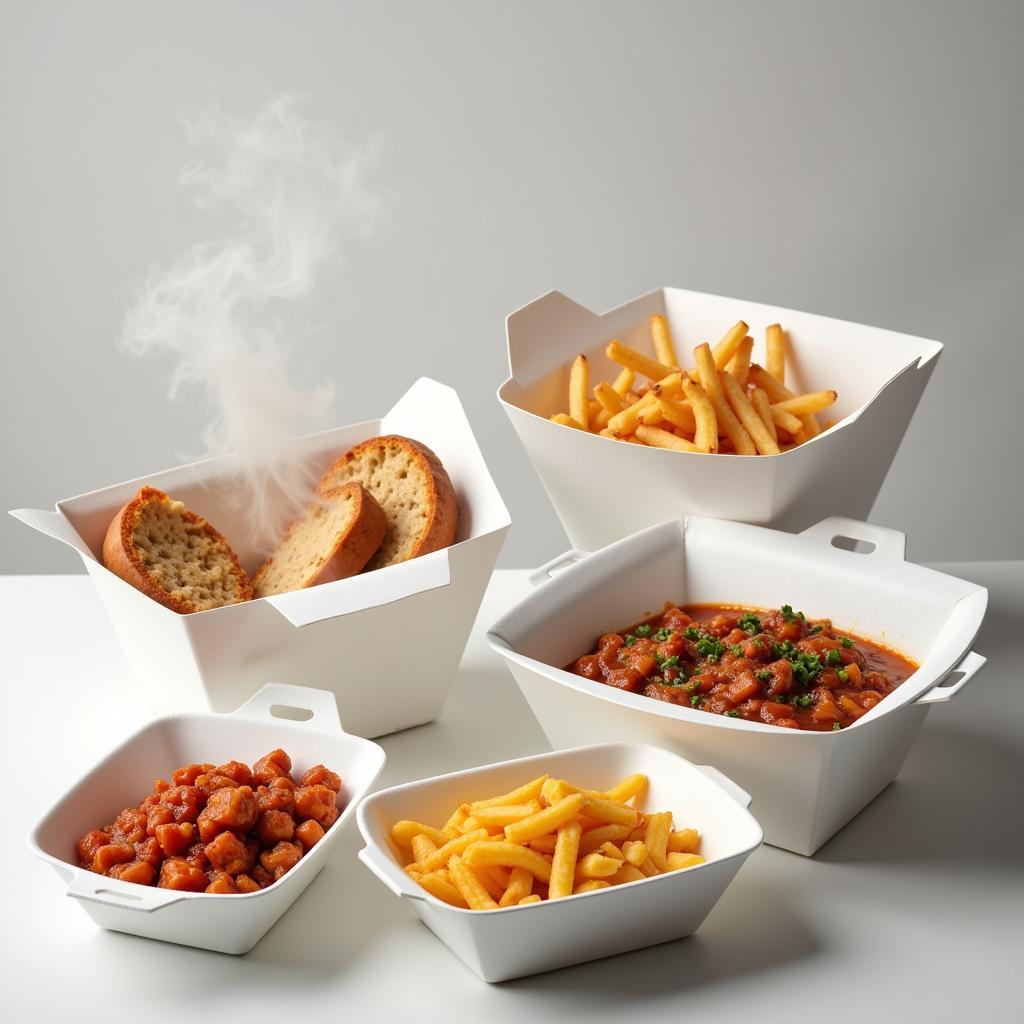Styrofoam Boxes For Food, a ubiquitous sight in the takeout and food service industry, have long been the go-to choice for their insulating properties and affordability. But are they the best option in today’s world? This article explores the pros and cons of using styrofoam food containers, delves into their impact on the environment, and highlights some eco-friendly alternatives you might consider.
Understanding the Role of Styrofoam in Food Packaging
Styrofoam, technically known as expanded polystyrene (EPS), has been a popular choice for food packaging due to its excellent thermal insulation. This means it keeps hot food hot and cold food cold, making it ideal for takeout and delivery services. It’s also lightweight and relatively inexpensive, which adds to its appeal for businesses. For consumers, styrofoam containers provide a convenient way to transport meals. Check out our range of styrofoam food boxes.
 Styrofoam food containers commonly used for takeout
Styrofoam food containers commonly used for takeout
The Environmental Impact of Styrofoam Food Boxes
While styrofoam offers practical benefits, its environmental impact is a significant concern. Styrofoam is not biodegradable, meaning it persists in landfills for centuries. The production process also contributes to pollution and greenhouse gas emissions. Furthermore, when styrofoam breaks down into smaller pieces, it can contaminate waterways and harm wildlife. There’s growing awareness about these issues, leading many to seek more sustainable alternatives.
Are There Biodegradable Alternatives?
Yes, absolutely! The market for eco-friendly food packaging is rapidly expanding. Biodegradable food boxes made from materials like sugarcane bagasse, bamboo, and paper pulp are becoming increasingly popular. These alternatives offer comparable functionality while significantly reducing the environmental burden.
Exploring Other Sustainable Food Packaging Options
Beyond biodegradable options, there are several other sustainable choices to consider. Box food paper containers, often made from recycled materials, are a readily available alternative. Reusable containers are another excellent choice, though they require a system for collection and cleaning. For larger meals, take out food trays made from recycled paper or plant-based materials are becoming increasingly common.
What About the Cost Factor?
While eco-friendly options can sometimes be slightly more expensive upfront, the long-term benefits for the environment outweigh the small price difference. Many businesses are finding that using sustainable packaging enhances their brand image and attracts environmentally conscious customers.
“Consumers are increasingly aware of the environmental impact of their choices,” says Amelia Green, a sustainability consultant. “Businesses that prioritize sustainable packaging are not only doing the right thing for the planet, but they are also appealing to a growing segment of the market.”
Making the Switch to Sustainable Food Packaging
Transitioning to sustainable food packaging doesn’t have to be complicated. Start by researching different options and considering your specific needs. Look for certifications that verify the environmental claims of the packaging. Many suppliers now offer a wide range of eco-friendly alternatives to styrofoam boxes for food.
What is the best alternative to styrofoam?
The “best” alternative depends on your specific needs. Consider factors like the type of food you serve, your budget, and your customer base. Explore our range of box for food options to find the perfect fit.
“Switching to sustainable packaging is an investment in the future,” adds Dr. David Miller, an environmental scientist. “It’s a step towards reducing our reliance on fossil fuels and protecting our planet for generations to come.”
Conclusion: Choosing the Right Food Packaging
Choosing the right food packaging is a balance between functionality, cost, and environmental responsibility. While styrofoam boxes for food have long been a staple, the growing awareness of their environmental impact is driving the shift towards more sustainable alternatives. By exploring and adopting these alternatives, we can all contribute to a healthier planet.
Need help choosing the right food packaging for your business? Contact us at Phone Number: 02437655121, Email: minacones@gmail.com, or visit us at 3PGH+8R9, ĐT70A, thôn Trung, Bắc Từ Liêm, Hà Nội, Việt Nam. We have a 24/7 customer service team ready to assist you.